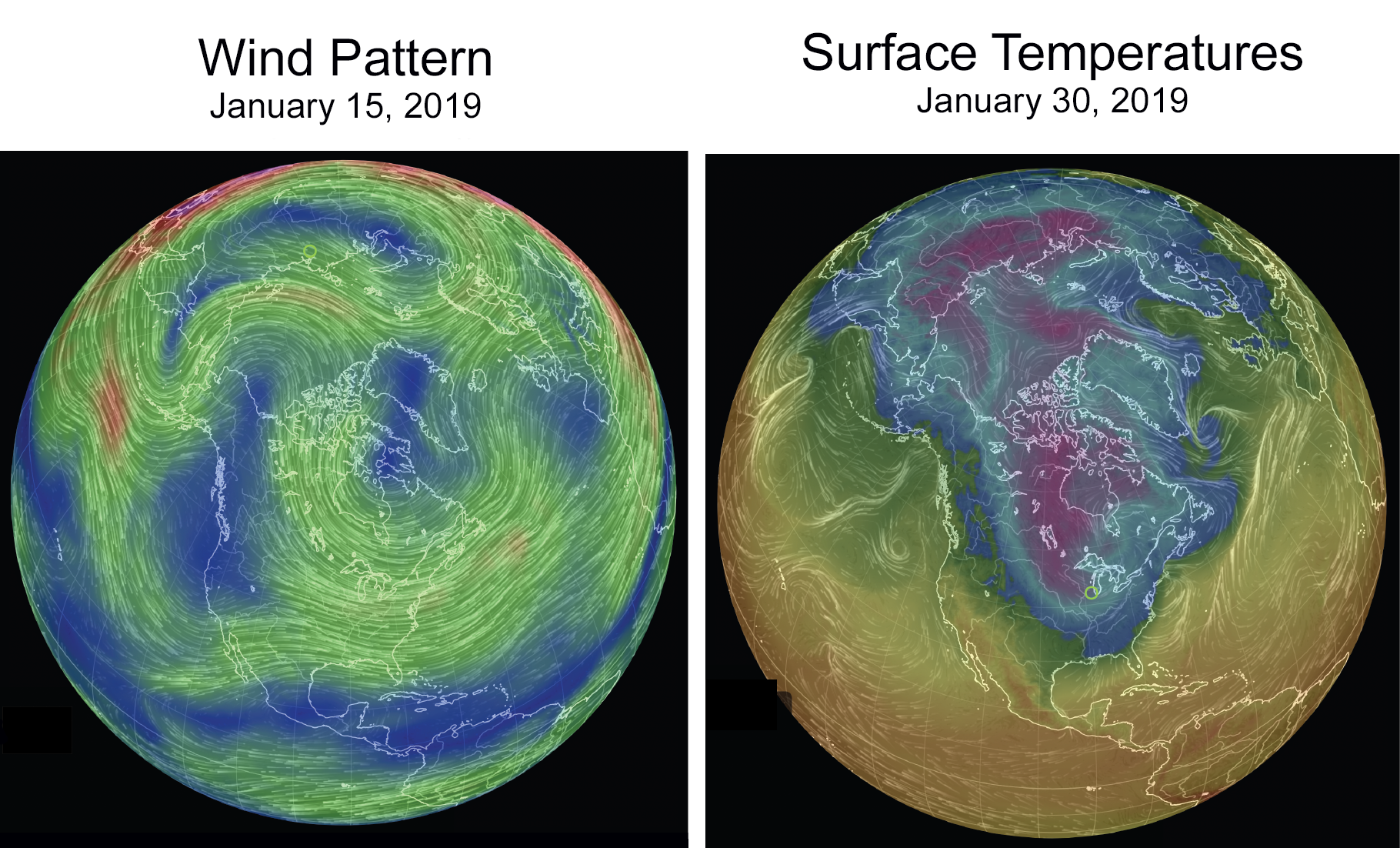Polar Vortex, a pattern of high-altitude winds in the Arctic, weakened resulting to frigid air over North America and Europe in the second half of January 2019. Although the Arctic ice sea extent remained below average, temperatures in the far north were closer to average than in past years.
Specifically, Arctic sea ice extent for January averaged 13.56 million square kilometers (5.24 million square miles). This was 860.000 square kilometres less in comparison to 1981 to 2010 long-term average sea ice extent, and 500.000 square kilometres above the record low for the month set in January 2018.
January 2019 was the sixth lowest January extent in the 1979 to 2019 satellite record.
In addition, the average rate of daily ice growth was rapid than the long-time average. The ice growth firstly occurred in the Bering Sea and Sea of Okhotsk in the Pacific sector as well as in the Labrador and Kara Seas. Some ice spread to the northeast of Svalbard, while retreating slightly to the northwest of these islands.
Total ice extent was tracking at eighth lowest on January 31, with below average extent in nearly all sectors of the Arctic.

Moreover, arctic temperatures were a bit above the average, in comparison to previous Januaries when the conditions were very warm.
In 2018, temperatures varied from 4 to 12 degrees Celsius (7 to 22 degrees Fahrenheit) above average.
Some parts on the Atlantic side had temperatures near or slightly below average in January. Therefore, the atmospheric circulation was unusual with above average pressure at sea level over a broad area including northern Canada, Greenland, and the northern North Atlantic, and a broad area of below average pressure along the Russian and Siberian Arctic coast. Low pressure also prevailed over the northern Pacific and Bering Sea.
In general, sea ice extent during January 2019 rose by 1.59 million square kilometres. This was 270.000 km more the 1981 to 2010 average rate for January.
According to the Arctic Sea Ice News and Analysis, the Polar Vortex when it is well developed, isolates the cold in the Arctic air in the far north, strengthens the mid-latitude jet stream, and reduces the frequency of frigid air outbreaks into lower latitudes.

Furthermore, in the early days of January, the Polar Vortex split into several closed streams. As a result, there was a cold air atmosphere crossing southern Canada, the US Midwest and the East Coast, during the last week of January.
This kind of events, has been popularly termed ‘invasions of the polar vortex’.
The conditions in the upper US Midwest, were much colder in comparison to the previous winter period in the past two decades.
Minnesota and Wisconsin experienced unusual low temperatures on January 30 and 31 in -27 to -35 degrees Celsius range (-17 to -31 degrees Fahrenheit).
Large areas of Michigan, Ohio, Indiana, Iowa, and the Dakotas reached temperatures below -20 degrees Celsius (-4 degrees Fahrenheit). However, few all-time low temperature records were set during the cold snap. Very mild conditions followed the cold snap in early February.
The amplification of global climate change in the Arctic, and the emerging potential for long-term atmospheric and ocean circulation changes, permafrost greenhouse gas release, and the effects of changing snow cover and snowmelt timing, point to crucial but hard-to-forecast impacts on global society and infrastructure by the second half of this century.
Concluding, due to the December loss and record low extent in early January, Antarctic sea ice extent declined at a slower-than-average rate.
On January 31, Antarctic sea ice extent lowered to third lowest on record, tying with 2006 and bested by 2017 and 2018.

































































